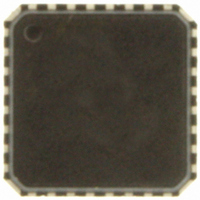ADT7462ACPZ-5RL7 ON Semiconductor, ADT7462ACPZ-5RL7 Datasheet - Page 41

ADT7462ACPZ-5RL7
Manufacturer Part Number
ADT7462ACPZ-5RL7
Description
IC TEMP/VOLT MONITOR 32-LFCSP
Manufacturer
ON Semiconductor
Datasheet
1.ADT7462ACPZ-5RL7.pdf
(81 pages)
Specifications of ADT7462ACPZ-5RL7
Function
Fan Control, Temp Monitor
Topology
ADC, Comparator, Multiplexer, Register Bank
Sensor Type
External & Internal
Sensing Temperature
-40°C ~ 125°C, External Sensor
Output Type
SMBus™
Output Alarm
No
Output Fan
Yes
Voltage - Supply
3 V ~ 5.5 V
Operating Temperature
-40°C ~ 125°C
Mounting Type
Surface Mount
Package / Case
32-LFCSP
Supply Voltage (max)
5.5 V
Supply Voltage (min)
3 V
Maximum Operating Temperature
+ 125 C
Minimum Operating Temperature
- 40 C
Lead Free Status / RoHS Status
Lead free / RoHS Compliant
Other names
ADT7462ACPZ-500RL7
ADT7462ACPZ-500RL7
ADT7462ACPZ-500RL7TR
ADT7462ACPZ-500RL7TR
ADT7462ACPZ-5RL7TR
ADT7462ACPZ-500RL7
ADT7462ACPZ-500RL7TR
ADT7462ACPZ-500RL7TR
ADT7462ACPZ-5RL7TR
Available stocks
Company
Part Number
Manufacturer
Quantity
Price
Company:
Part Number:
ADT7462ACPZ-5RL7
Manufacturer:
ON Semiconductor
Quantity:
135
•
•
•
conditions in all these cases, the actual system is almost
never operated at worst−case conditions. The alternative to
designing for the worst case is to use the dynamic T
control function.
Although a design usually accounts for worst−case
GOOD CPU AIRFLOW
Worst−Case Processor Power Consumption
This data sheet maximum does not necessarily reflect
the true processor power consumption. Designing for
worst−case CPU power consumption can result in a
processor becoming over−cooled (generating excess
system noise).
Worst−Case Peripheral Power Consumption
The tendency is to design to data sheet maximums for
peripheral components (again over−cooling the
system).
Worst−Case Assembly
Every system manufactured is unique because of
manufacturing variations. Heat sinks may be loose
fitting or slightly misaligned. Too much or too little
thermal grease may be used. Variations in application
pressure for thermal interface material can affect the
efficiency of the thermal solution. Accounting for
manufacturing variations in every system is difficult;
therefore, the system must be designed for the
worst−case.
INTERFACE
INTEGRATED
MATERIAL
THERMAL
SPREADER
VENTS
GOOD AIR EXCHANGE
I/O CARDS
GOOD VENTING =
VENTS
HEAT
FAN
SUBSTRATE
HEAT
SINK
Figure 65. Chassis Airflow Issues
EPOXY
Figure 66. Thermal Model
THERMAL INTERFACE MATERIAL
SUPPLY
POWER
DRIVE
BAYS
CPU
FAN
PROCESSOR
VENTS
POOR CPU
AIRFLOW
I/O CARDS
POOR AIR EXCHANGE
θ
θ
θ
θ
θ
POOR VENTING =
SA
TIMS
CTIM
TIMC
JTIM
T
T
T
T
T
T
TIM
TIM
C
A
S
J
θ
CS
POWER
SUPPLY
DRIVE
BAYS
FAN
θ
CPU
θ
http://onsemi.com
CA
JA
MIN
41
Dynamic T
automatic fan control loop by adjusting the T
based on system performance and measured temperature.
This is important because, instead of designing for the worst
case, the system thermals can be defined as operating zones.
The ADT7462 can self−adjust its fan control loop to
maintain either an operating zone temperature or a system
target temperature. For example, it can be specified that
ambient temperature in a system be maintained at 50°C. If
the temperature is below 50°C, the fans might not need to run
or might run very slowly. If the temperature is higher than
50°C, the fans need to throttle up.
the right settings to suit the system’s fan control solution.
This can involve designing for the worst case, followed by
weeks of system thermal characterization and, finally, fan
acoustic optimization (for psycho−acoustic reasons).
control mode involves characterizing the system to find the
best T
best PWM
the ADT7462 dynamic T
shortens the characterization time and alleviates tweaking the
control loop settings, because the device can self−adjust
during system operation.
operating zone temperatures required for the system.
Remote 1 and Remote 2 channels have dedicated operating
point registers. This allows the system thermal solution to be
broken down into distinct thermal zones. For example, CPU
operating temperature is 70°C, VRM operating temperature
is 80°C, and ambient operating temperature is 50°C. The
ADT7462 dynamically alters the control solution to
maintain each zone temperature as close as possible to its
target operating point.
the operation of the dynamic T
Dynamic T
The challenge presented by any thermal design is finding
Obtaining the greatest benefit from the automatic fan
Dynamic T
Figure 67 shows an overview of the parameters that affect
MIN
Figure 67. Dynamic T
T
LOW
MIN
and T
MIN
MIN
MIN
value for the quietest fan speed setting. Using
Control Overview
T
RANGE
MIN
control mode is operated by specifying the
control mode builds upon the basic
OPERATING
POINT
settings for the control loop and the
MIN
T
HIGH
MIN
MIN
control mode, however,
T
THERM
control loop.
Control Loop
T
RANGE
TEMPERATURE
MIN
value












